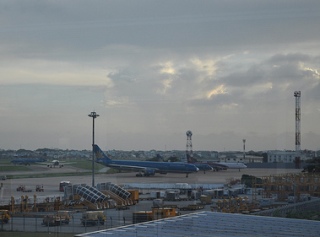 Cargo airlines from South Asia and Southeast Asia showed the way in 2013, posting some of the biggest airfreight volume growths over the past year, according to an air cargo market database monitoring group.
Cargo airlines from South Asia and Southeast Asia showed the way in 2013, posting some of the biggest airfreight volume growths over the past year, according to an air cargo market database monitoring group.
Within these regions, Bangladesh and Vietnam registered the largest increase in volume and revenue, beating their much larger neighbors India and China, said WorldACD in its recent market analysis.
This development is “more than enough reason to take a closer look at the next-generation Asian tigers in South Asia and Southeast Asia,” it added.
Between 2011 and 2013, South Asia’s cargo volume increased by 18 percent. With the volume from India, which is around 70 percent of the total, growing by only 8 percent during the period, it was Bangladesh, Pakistan, Sri Lanka, Nepal, and the Maldives combined that saw significant growth.
In the same period, the Southeast Asian region (excluding Indonesia) increased its airfreight volume by 4 percent. While a small expansion, WorldACD said it was still impressive, given that the traditional cargo powerhouses of Singapore, Thailand, and Malaysia all dropped in volume.
Indonesia showed very strong returns, largely due to domestic business growth. Strong performances were also noted for Vietnam and Cambodia, while air cargo from the Philippines experienced a small decline.
Regional airlines play the main role in the growth spurts—carriers based in the Gulf drive growth in South Asia, and their counterparts from Asia-Pacific in Southeast Asia.
Regional and local forwarders in Southeast Asia also fared well, said the database service. The world’s top 20 forwarders have a share of 23 percent of outgoing business in Vietnam, Indonesia, Myanmar, Cambodia, Brunei, Laos, and the Philippines combined. Forwarders’ share from the smaller cargo countries in South Asia is only 14 percent.
Meanwhile their share in air cargo to both regions is higher at 30 percent, but still way below their worldwide share of 45 percent.
On differences between outgoing and incoming air cargo, both regions saw a change in the outgoing-incoming air cargo balance from 58:42 in 2012 to 56:44 in 2013. Perishables are very important both as export and import items.
The carriers also look more outward, not only for markets to serve, but also for supplies, said WorldACD.
On global world cargo volumes, the company noted their continued growth, with January volumes up by 6.4 percent year-over-year. General cargo did better than specific product categories.
The usual January-over-December revenue drop was smaller this time: 7 percent against 10 percent a year ago.
“Thus, given what air cargo experienced in 2013, the year started reasonably well,” said the monitoring group.
Growth was driven particularly from China and Hong Kong, but was also seen from South America and Northern Europe.
Photo: David McKelvey




